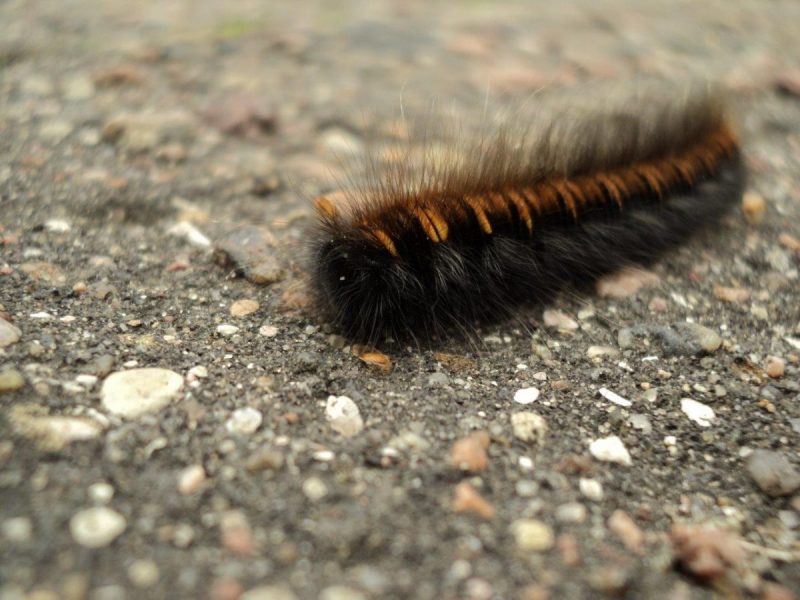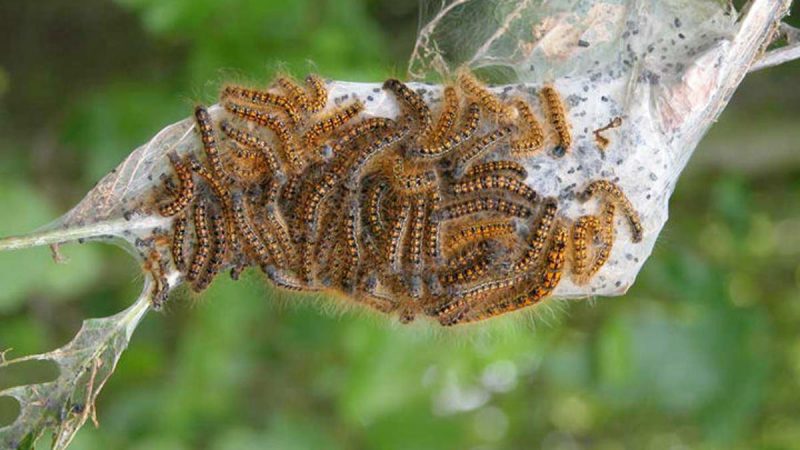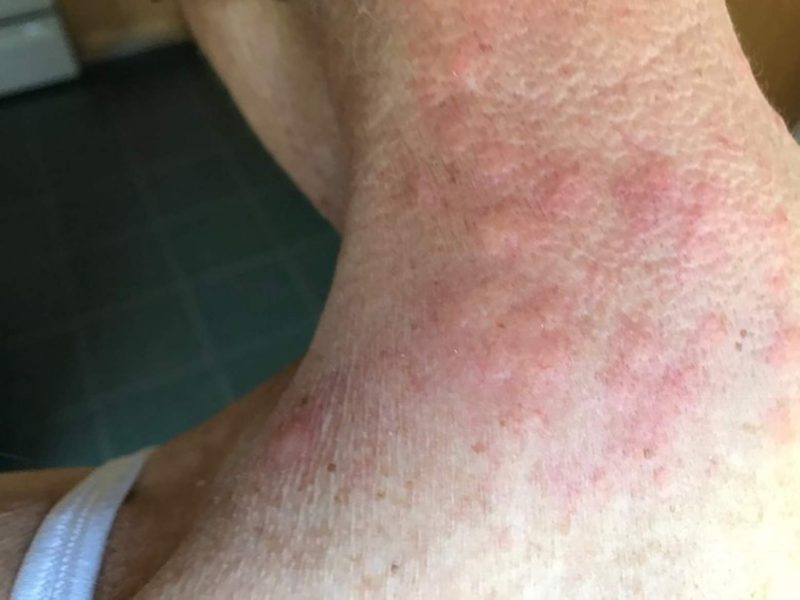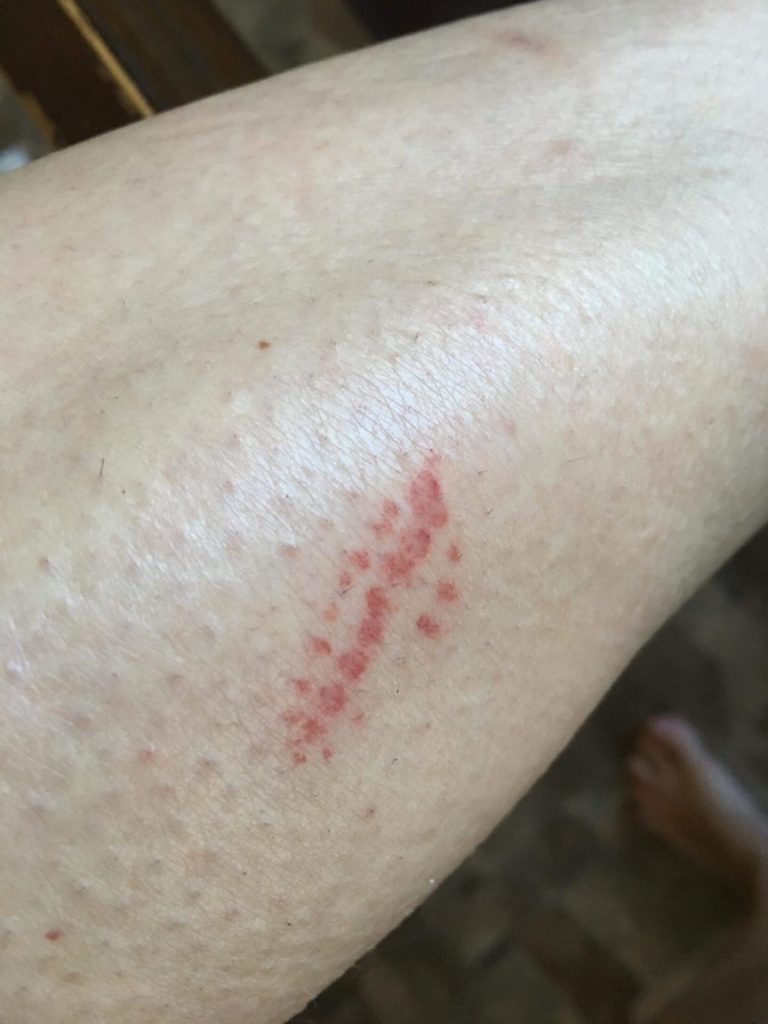Hairy caterpillars become winged insects upon maturity. Beautiful butterflies and moths must go through a larval or caterpillar stage. Some species go through a hairy caterpillar stage. This can be damaging to plants and irritating to human skin. Keeping these creepy crawlies away from your premises will be healthy for your plants, pets, and your household.
What Is a Hairy Caterpillar?
A hairy caterpillar is the larval stage of moths. Flannel moths, buck moths, white cedar moths, and Io moths are only some of the moths that pass through the venomous, hairy caterpillar stage. They eat plants and gather in large clumps. These larvae bend with the tree they feed on. They do this until they transform into adult moths.

Hairy caterpillars tend to travel together in search of food. In doing so, they encounter pets and humans. They cause terrible discomfort and irritation upon contact with skin. Some people develop an allergic reaction to hairy caterpillars.
Hairy caterpillars are voracious eaters or vegetation. They tend to travel and eat together. These crawlies also huddle together. They then spin cocoons on house exteriors, plants, trees, and even outdoor furniture. Hairy caterpillars can cause skin irritation when they get in contact with skin. They have hairs to protect them from reptiles and birds. These hairs tend to break off when they become disturbed. This results in raised, itchy hives.
Repelling Hairy Caterpillars
Below are some effective ways to repel these hairy little caterpillars:
Oil spray
Get a spray bottle. In it, combine a teaspoon of liquid soap, 2 cups of warm water, and 2 tablespoons of canola oil. Mix and then spray on caterpillars. Refrain from using this solution on hairy-leafed plants.
Pepper spray
You can make a pepper spray with fresh spicy peppers like bird’s eye chili or habanero peppers. Be sure to wear gloves while you chop the peppers to make half a cup. Then, crush six garlic cloves. Puree the garlic and peppers with two cups of water. Add a teaspoon of liquid soap and a tablespoon of vegetable oil. Pour this mixture into a glass jar and close it. Place it under the sun for about two days. Get a coffee filter and strain it into a spray bottle. Spray this on caterpillars.
Daily garden inspection

Always examine your plants. Look for green caterpillars and moth eggs. Snip off the leaves that have moth eggs. Dispose of them properly. Do not incorporate them into your compost pit. This will contaminate your compost for your plants and reintroduce the moths into your garden.
Do not light up your garden
Lights in the garden attract moths. This encourages them to reproduce there. Turn off your garden lights. It is always better to repel moths than deal with their hairy caterpillars days after.
Perform companion planting
Planting strong, aromatic herbs like sage, peppermint, mugwort, and lavender. These plants also repel other insects.
Make your garden attractive to caterpillar-eating small birds, reptiles, amphibians, chickens or ducks

Place a birdbath and bird feeders in your garden or yard. This will encourage birds to visit your garden and prey on any caterpillars they see. Birds can prey on moths as well. Chicken and ducks also do the same if you have them and let them roam through your garden from time to time. Placing a pond in your garden can encourage frogs, lizards, and turtles to stay in your garden.
Use Bacillus thuringiensis to treat your plants
This specific bacteria only targets caterpillars, especially those that just hatched. Remove the caterpillar eggs from the leaves of your plants and then treat the plants with this strain of bacteria. The bacteria will kill off the larvae from eggs you have missed. Caterpillars that eat treated plants will die off.
Skin Irritation From Hairy Caterpillars

These hairy caterpillars look like cuddly toys. Yet, they have tiny setae that cause an extreme immune reaction in some individuals. Your immune system will release a flood of histamine. This will make you experience rashes, vesicles, welts, itching, swelling, and redness. It can also trigger respiratory and eye allergies. Some people can also get fluid-filled sacs or vesicles that often sting or burn.
The allergic reaction can result in shortness of breath, itching, difficulty swallowing, runny nose, and sneezing if a child places a hairy caterpillar in the mouth. This needs urgent medical attention. Treating the rash on the skin is easy to treat at home. The first thing you must do is to remove the tiny hairs. You can do this by using a piece of strong tape on the affected skin. This will take out the hairs.

Wash the skin with clean soap and water. Then, apply some steroid cream to it. You can also apply an ice bag to the area for 10-15 minutes can relieve the pain.

Keeping these caterpillars away from your garden and home can help maintain a safe and healthy living space for your entire household. Allowing these caterpillars to thrive will destroy your plants and result in an infestation. Prevention is better than battling hairy caterpillars all the time.